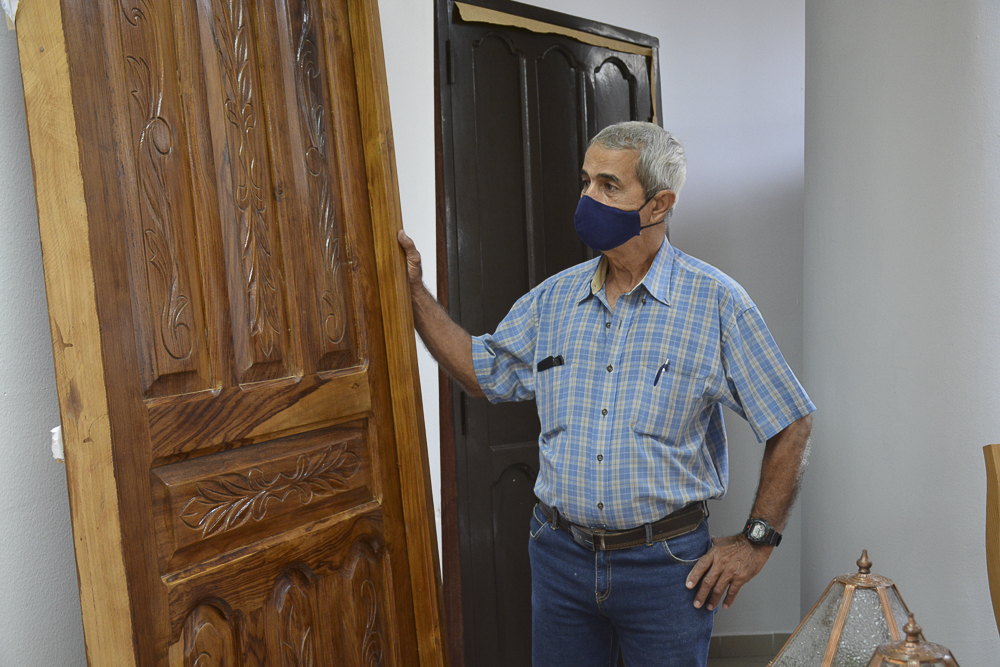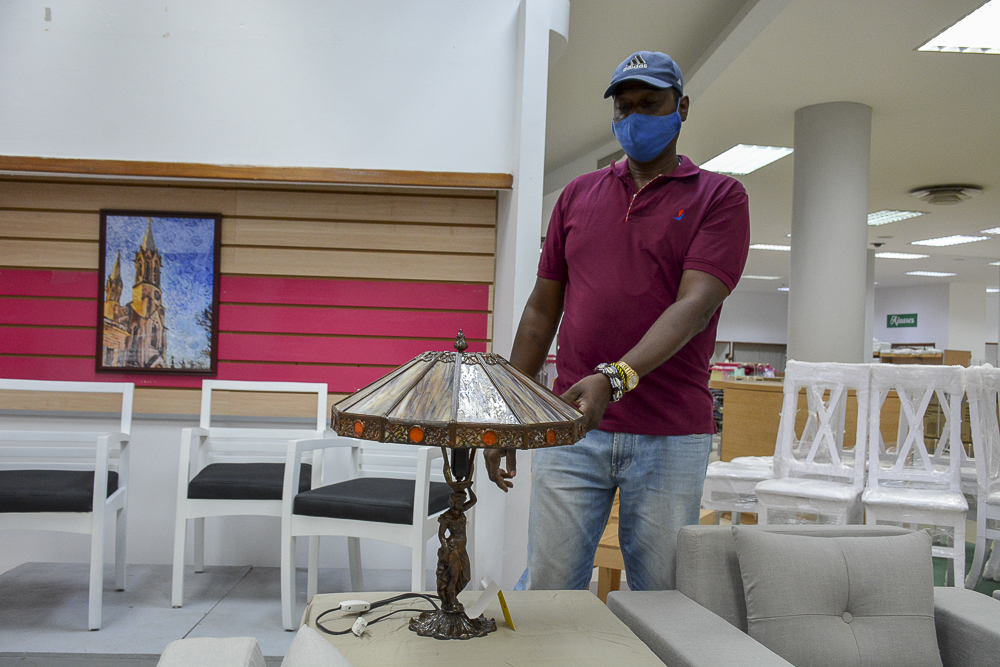CAMAGÜEY.- With furniture and plumbing in El Encanto store in this city, the collection of freely convertible currency (MLC) for artisans began, through the alliance of the Cimex Corporation and the Cuban Fund for Cultural Assets (FCBC).
The sale began in February and the expectations of the parties involved in the business are growing, despite the mobility limitations in a territory that has been with autochthonous transmission of COVID-19 for two months.
“It has been very well accepted by the population. The project is still incipient, and the intention is very good. We started at El Encanto in MLC, but we are going to expand to other stores and also incorporate Cuban pesos (CUP), ”said Lourdes Torres Luaces, commercial manager of the Cimex branch in Camagüey.
 William Fernández Valentí, a member of the FBCB since 1989, participates with one of its star products: wooden doors resistant to insects and durable in weather conditions. There are different sizes and the average price is around 530 MLC.
William Fernández Valentí, a member of the FBCB since 1989, participates with one of its star products: wooden doors resistant to insects and durable in weather conditions. There are different sizes and the average price is around 530 MLC.
“We need to import. It is difficult for us to buy raw materials such as nails and paint. This is a way of acquiring the currency to be able to import, because the Bank does not sell me or exchange currency and I have no where to get it from, ”explained Fernández Valentí.
Alberto Cabalé, from a family recognized and awarded in international fairs, also considers this collection opportunity valid based on the supply of raw material with national or foreign companies.
 “In the first week, a living room set and several chairs were sold. We offer different models of furniture. We were used to working for products to appear at fairs or hotel orders for specific settings. With our designs we focus on the national public ”, said Cabalé.
“In the first week, a living room set and several chairs were sold. We offer different models of furniture. We were used to working for products to appear at fairs or hotel orders for specific settings. With our designs we focus on the national public ”, said Cabalé.
One of the upholstered furniture costs 816.48 MLC and each white chair costs 103.68 MLC. "We started with a price list that Cimex already had of how it had sold similar products, that's where we guide ourselves to get the cost sheet and apply the lowest possible margin for a competitive product," said Cabalé, in whom the possibility is evident of the chain when acquiring the paint used at Cimex itself.
 Luis Daniel Hernández Sed brought his lamps made of copper-clad calamine and opalescent glass. Two of the models on display there cost 38.40 MLC and 244.48 MLC, respectively.
Luis Daniel Hernández Sed brought his lamps made of copper-clad calamine and opalescent glass. Two of the models on display there cost 38.40 MLC and 244.48 MLC, respectively.
“Cimex is putting almost 35% of the commercial margin; the Fund, only 5%, and our profit is around 24 and 27%. It is uneven with respect to costs, the purchasing power of the population, and the objective of the sale because the merchandise must rotate, not stagnate, ”said Hernández Sed.
The sanitary complexity in the city has influenced the regulation of access to the establishment, on the other hand, the opinion of the public and the experience of the producers have to be taken into account in the subsequent decision-making.
“We hope to have a good start. At other times we have marketed through Artex, which put a commercial margin of around 15%. The results were satisfactory and the demand was good ”, added Hernández Sed.
As part of the contract, the artisans will undertake the repair or replacement of the product within 15 days after purchase, and they are even open to offer an after-sales service for maintenance with the customer.
Belkis Cruz Saragoza, director of the FCBC subsidiary, is enthusiastic about this market opportunity: “The design and quality of the work, the authenticity and the management make our difference. The company will continue to refine. We will incorporate reproductions of plastic arts, ceramics and other products that were only seen at fairs, and now they will be in stores ”.
Why doesn't El Encanto sell original art? This is one of the concerns on the part of the catalog members that the FCBC should represent. In this regard, Cruz Saragoza argued: “We are not in a position to have pieces of plastic arts here, due to the marketing mechanisms, the corporate purpose of the entity and what a work of art represents in the protection because it is part of the Cuban patrimony. For now, we seek to have here reproductions of the originals that are available to businesses and the population at the Amalia Gallery ”.
Translated by Linet Acuña Quilez



